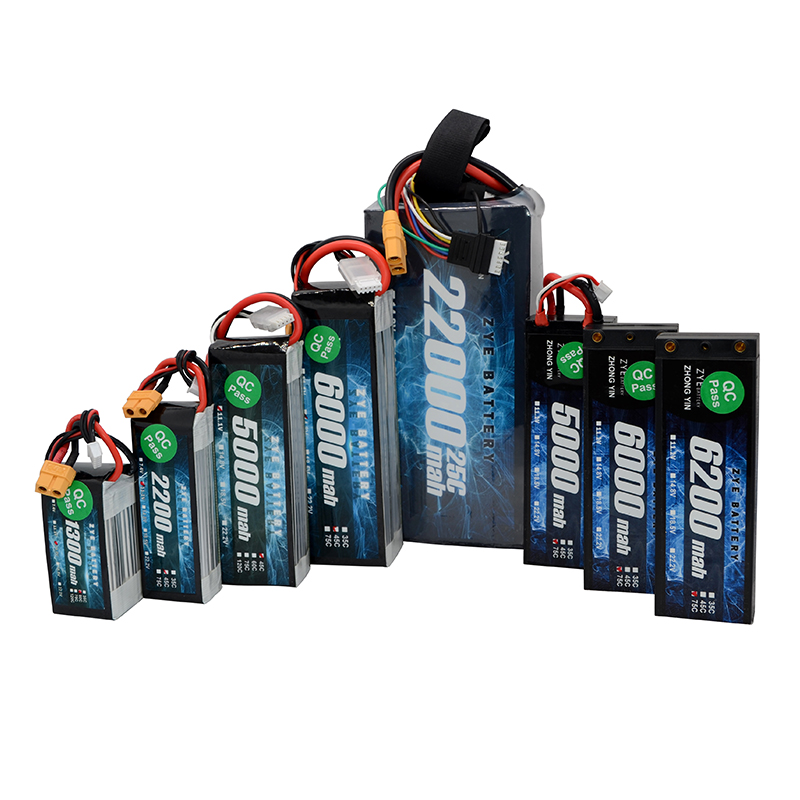How Do Drone Solid-State Lithium Batteries Work?
2025-09-22
Although traditional lithium polymer (LiPo) batteries have become mainstream, their safety and energy density bottlenecks have become increasingly prominent. Unlike traditional lithium-ion batteries that rely on liquid electrolytes, solid-state batteries adopt a completely different approach. This innovative design is expected to offer higher energy density, greater safety and a longer service life.

Solid-State batteries are moving from the laboratory to the forefront of applications. So, how exactly does this highly anticipated technology work? How will it change the future of drones?
The working process of solid-state batteries is macroscopically similar to that of lithium-polymer batteries, still involving the migration of lithium ions between the positive and negative electrodes. However, the implementation methods at the micro level bring about a world of difference.
Solid electrolytes: They are usually made of special solid materials such as ceramics, sulfides or polymers. These materials have extremely high ionic conductivity, allowing lithium ions to pass through quickly while also insulating electrons, perfectly combining the two major functions of conduction and isolation.
High-capacity electrode
Anode innovation: One of the most exciting potentials of solid-state batteries is the ability to directly use Lithium Metal as the anode. This is because the solid electrolyte can effectively inhibit the growth of Lithium Dendrites, and the penetration of dendrites through the separator is the main cause of short circuits and fires in liquid batteries.
Positive electrode upgrade: By combining high-voltage and high-capacity positive electrode materials (such as high-nickel ternary, lithium-rich manganese-based or even sulfur positive electrodes), the energy potential of the entire battery system can be fully exploited.
Work process
When a battery is charged or discharged, lithium ions (Li⁺) move back and forth between the positive and negative electrodes under the influence of an electric field through the solid electrolyte, which serves as a solid "bridge". Electrons (e⁻) flow through the external circuit, thereby forming an electric current to power the unmanned aerial vehicle.
In solid-state battery design, what can replace liquid electrolytes?
In traditional lithium-ion batteries, the liquid electrolyte serves as the medium for the propagation of ions between the anode and cathode during charging and discharging cycles. However, solid-state battery design replaces this liquid with solid materials that perform the same function. This solid electrolyte can be made of various materials, including ceramics, polymers or sulfides.
The selection of solid electrolyte materials is of vital importance as it directly affects the performance, safety and manufacturability of the battery.
Polymer electrolytes are made of organic materials and have a series of different advantages:
1. Flexibility: They can adapt to the volume changes of electrodes during the cycling process.
2. Easy to manufacture: Polymer electrolytes can be processed using simpler and more cost-effective methods.
3. Improved interface: They usually form a better interface with the electrode, thereby reducing resistance.
One of the key challenges in solid-state battery design, regardless of the type of solid electrolyte used, is to optimize the interface between the electrolyte and the electrode. Unlike liquid electrolytes that are easy to adhere to electrode surfaces, solid electrolytes need to be carefully designed to ensure good contact and efficient ion transfer.
Researchers are exploring various strategies to improve these interfaces, including:
1. Surface coating: Apply a thin coating on the electrode or electrolyte to enhance compatibility and ion transfer.
2. Nanostructured interfaces: Create nanoscale features at the interfaces to increase surface area and improve ion exchange.
3. Pressure-assisted assembly: Controlled pressure is used during the battery assembly process to ensure good contact between components.
Conclusion:
The working principle of solid-state batteries is not merely a simple material replacement, but rather a paradigm revolution that shifts from liquid ion migration to solid-state ion conduction. It delivers energy more safely and efficiently through a sturdy "solid-state ion bridge". For drones, this is not merely about replacing a battery; it marks the beginning of a brand-new era of flight.
ZYEBATTERY has always been focused on cutting-edge energy technologies. We closely follow the development of next-generation technologies such as solid-state batteries and are committed to providing the market with safer and more powerful drone power solutions in the future, helping our customers fly higher, farther and more safely.
























































